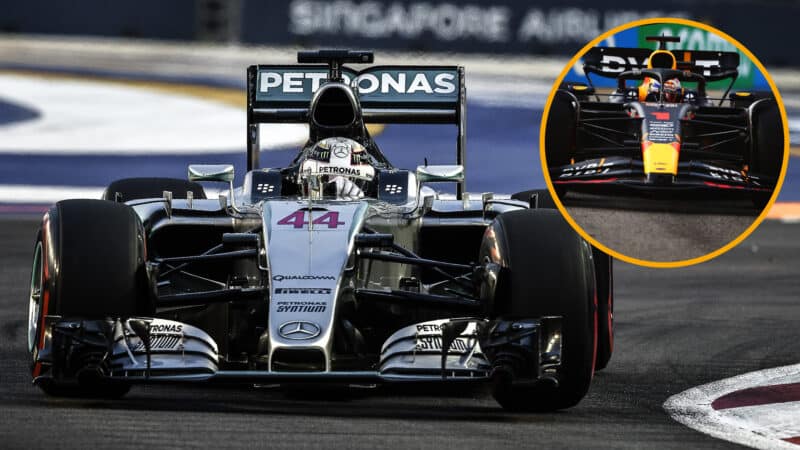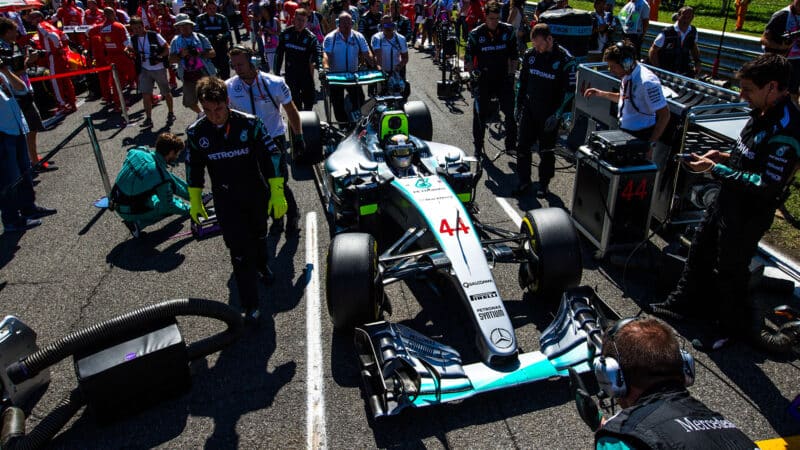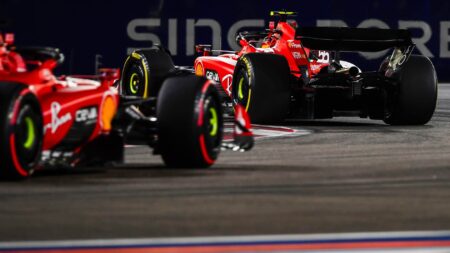It wasn’t only fans expressing such paranoia. Here’s what Hamilton had to say after qualifying: “I had 100% confidence in the car… the balance was really good… It was a bit like doing a good lap on the prime tyre and then you go and do exactly the same lap on an option and it’s a second-and-a-half faster. I do a good lap but it’s a second-and-a-half slower than the guys ahead. We’ve not lost any performance in the car, the drivers haven’t lost any performance, so there’s only one way it can come and that’s obviously the rubber. But I have no way of knowing that’s the case and I challenge you guys [the media] to go and find what the reasons might be.”
The idea was put to Wolff, who replied: “It crossed my mind. I have seen a lot of things, but I don’t think Pirelli would do that.”
No evidence was ever found to substantiate the theory and after the shock had subsided Wolff said, “You need to set the car up in an aggressive way to make the tyres work and I guess somewhere along the way at one of the junctions we went the wrong way.”
It was tyre temperature related; that much became clear as the engineers made their post-mortem. But why? At the ride heights required for Singapore’s bumps, the loads were just not being fed into the tyres in a way which allowed them to work. Perhaps with the lower pressures previously permitted, it would have been possible to get past that threshold of temperature where the tyre suddenly switches on. Later analysis suggested that with that particular combination of track and set-up the Mercedes just could not switch on its tyres.
“We haven’t been able to put the car in the sweet spot of the tyre,” summarised Wolff. “You need to have everything right; the ride-height, the camber, the toe, the pressures, the temperature of the bulk, the temperature of the surface. There is so much influencing it.”
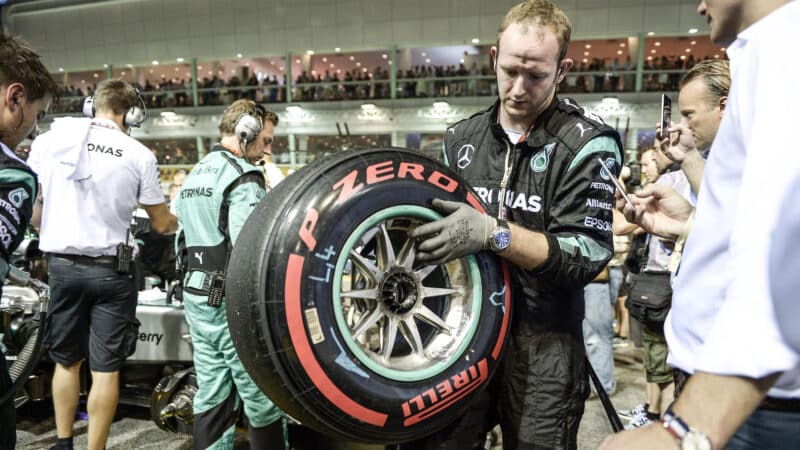
After said tyre pressure misdemeanour, rumours were abound that Mercedes was punished with an extra hard compound in Singapore
Getty Images
In Suzuka the following week the problem had disappeared. Hamilton and Rosberg sewed up the front row, 0.5sec clear of the field, and raced to a dominant 1-2 finish. The engineers got to put their pet theories to the test when they returned to Singapore in 2016 and were relieved when Rosberg won comfortably from pole. But that still didn’t definitively answer what had gone wrong in ’15.
This time around the conspiracy theories about Red Bull suggested that the latest technical directives on flexible bodywork had prevented it from doing something trick with its floor and hence it had lost its previous downforce advantage.
“It’s nothing to do with that,” claimed Christian Horner. “We have not needed to make a single change to the car as a result of the technical directives.”
Before the cynics jump in with, ‘Well, he would say that, wouldn’t he?’, talking off-the-record with some of the people behind the technical directives, even they were adamant that the Red Bull problems were unconnected to that.
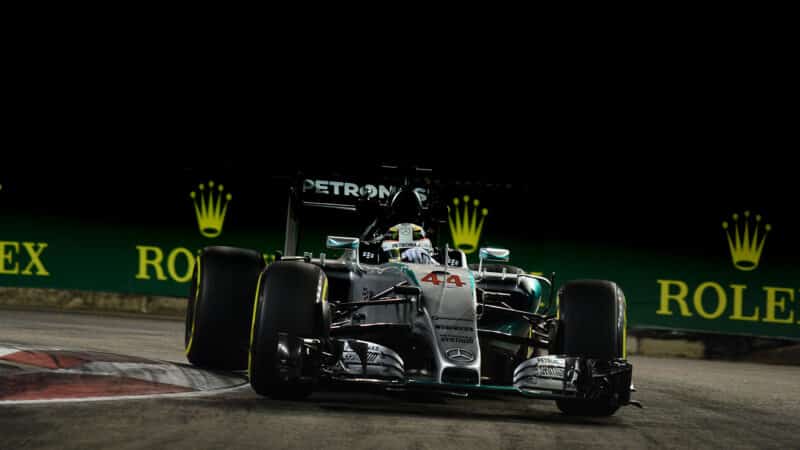
Mercedes found itself 1.5sec off the pace in Singapore ’15
Grand Prix Photo
What it had in common with Mercedes in 2015 was that the tyres were just not working over a single lap at the ride heights and suspension set-up chosen. “The car is just not responding to changes,” said Horner. “You can hear this: understeer, oversteer, braking issues – it’s like we haven’t managed to get the tyre into the right working window.
“Usually when you see a gap that big is because the tyre just isn’t fundamentally working now. We’ve tried different things with set-up, we’ve tried different preparations, and it’s just not happening.”
Singapore is extremely sensitive to tyre grip. Two degrees centigrade below optimum temperature will represent around 1% loss of grip – which would be worth around 0.4sec around here. Getting the temperature of any tyre’s core (or bulk) matched with that of its surface is a crucial part of getting it to work – and a track with not many quick turns and lots of slow ones will tend to overheat the surface but under-work the core. The more the surface overheats, the less load that gets fed into the core, so creating yet greater divergence and disconnect between the two.
The car was much more respectable in the race with higher tyre pressures to stop the bottoming out which had been causing Verstappen to lock up repeatedly in qualifying, but that brought with it a reduction in peak grip. It looked to be around 0.3sec off the ultimate pace on race day, as opposed to the 1sec+ of qualifying.
The problem will almost certainly dissolve in Suzuka this weekend, making another parallel with 2015.
